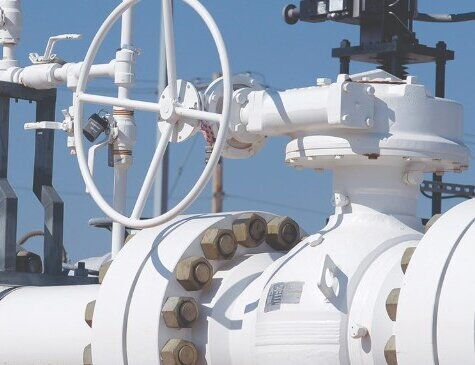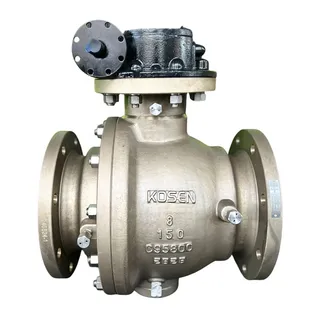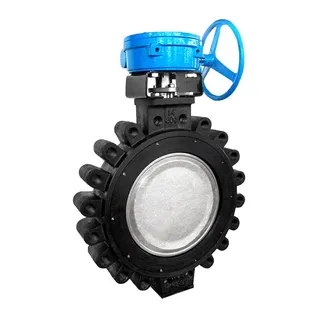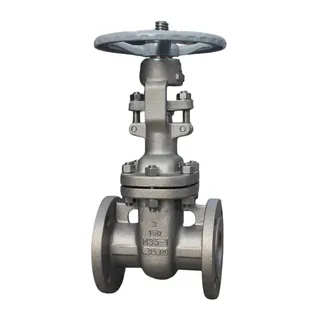
Valves are vital components in industrial systems, but prolonged exposure to harsh working conditions can lead to issues such as leakage and operational stiffness, affecting stability and safety. This article identifies common causes of valve problems, including body and bonnet leakage, sealing ring issues, and valve stem stiffness. It discusses various repair methods, such as adhesive repair, diverting welding, and sealing ring maintenance, to address these issues. Furthermore, it emphasizes the importance of precise machining, lubrication, and regular inspection for preventing valve stem stiffness and packing leakage. By following effective maintenance strategies, valves can operate reliably and efficiently, ensuring prolonged service life and improved system performance.
Valves play a crucial role in industrial systems; however, due to prolonged exposure to complex working environments, issues such as leakage and operational stiffness may arise, affecting the system's stability and safety. Understanding the root causes of these problems and implementing scientific maintenance measures is key to ensuring the long-term stable operation and extended service life of valves.
Leakage from the valve body and bonnet is often caused by poor-quality cast iron components or external impacts during use. Common causes include poor casting quality in cast iron parts, which may have defects such as sand holes, loose structure, or slag inclusion; freezing cracks in low-temperature environments; defects such as slag inclusion, incomplete welding, or stress cracks during the welding process; and damage caused by impacts or pressure on the valve.
Improve Casting Quality: Strictly follow casting processes during manufacturing to reduce defects. After casting, perform strength tests and non-destructive testing to ensure no hidden defects.
Protection in Low-Temperature Environments: For valves working in low-temperature conditions, especially when the temperature is below 0°C, insulation or preheating measures should be taken. Water should be removed from unused valves to prevent freeze cracking.
Welding Quality Control: Ensure material inspections before welding to confirm it meets design standards. After welding, verify the joints for defects and conduct pressure tests to confirm sealing.
Avoid External Impacts: During installation and transportation, prevent external impacts. For large-diameter valves, use special supports to reduce the risk of damage from impacts.
When the valve body leaks, the pressure and flow rate of the leaking media vary, so different repair measures should be taken.
Adhesive Repair Method: For situations where leakage pressure is low and the leak volume is small, adhesives can be used for repair. The adhesive, with its fast-curing properties, can form a sealing layer when applied to the leak point, effectively stopping the leakage.
Diverting Welding Method: For cases with higher media pressure and larger leaks, the diverting welding method can be used. A channel is created around the leak point to divert the leaking media to the outside of the valve, and then welding repairs are performed on the leak point to ensure sealing.
Welding Repair Method: For valves under high temperature and high pressure, welding repairs can be employed. Use suitable welding materials and techniques to close the leak points and restore normal operation.
Valve sealing rings play a vital role in sealing, and leakage often originates from looseness, corrosion, aging, or damage at the connection between the sealing ring and the valve body.
Sealing Ring Selection and Installation: The material of the sealing ring should be chosen based on the properties of the working medium, temperature, and pressure. It should be installed strictly following the prescribed methods to ensure sealing performance.
Sealing Ring Corrosion Treatment: Over time, sealing rings may corrode due to prolonged exposure to the medium, reducing sealing efficiency. In such cases, cleaning, repairing, or replacing the sealing ring based on the level of corrosion is necessary to maintain sealing performance.
Sealing Ring Aging and Damage Repair: Aging and wear of sealing rings are common, especially in high-temperature, strongly corrosive environments. Inspect aged sealing rings and replace them promptly to ensure long-term stable operation.
Valve stem stiffness is commonly caused by inaccurate machining of the stem and mating parts or misalignment between the valve stem and valve body. Stiffness can cause difficulty in valve operation, affecting fluid regulation.
Precise Machining and Assembly: To ensure smooth stem operation, the machining precision of the stem, valve seat, and other components must be guaranteed. Proper clearance should be maintained to avoid excessive friction.
Stem Bending Treatment: If the stem is bent or deformed, it should be corrected. If correction is not possible, the stem should be replaced. During operation, excessive torque should be avoided to prevent deformation.
Lubrication and Regular Inspection: Regular cleaning and lubrication of the stem, especially in high-temperature, high-pressure, and corrosive environments, are essential. Lubricants reduce friction between the stem and components, ensuring flexibility.
Packing leakage is a common cause of valve leakage, typically occurring in the sealing area between the valve stem and valve body. The leakage may result from improper packing selection, incorrect installation, aging, or wear.
Proper Packing Material Selection: The packing material should be selected based on the valve's working medium, temperature, and pressure. Common materials include graphite and PTFE. During installation, packing should be placed ring by ring, ensuring appropriate compression to prevent leakage.
Packing Aging and Replacement: Over time, packing will age, reducing sealing efficiency. Regular checks should be conducted, and aging packing should be replaced to avoid leakage.
Packing Gland Maintenance and Adjustment: The packing gland should be tightened evenly but not excessively to avoid damaging the packing. Regularly check the gland bolts and adjust or replace them when necessary.
The importance of valves in industrial systems is undeniable. Regular maintenance and timely repairs can effectively extend valve service life, reduce system downtime, and improve production efficiency. Through rational valve design, improvements in manufacturing processes, and enhanced maintenance techniques, valves can operate stably and efficiently under various complex working conditions. Accurate diagnosis of leakage issues, timely execution of repair plans, and strict adherence to operating procedures are fundamental to ensuring the long-term stable operation of valves.



